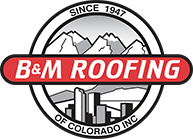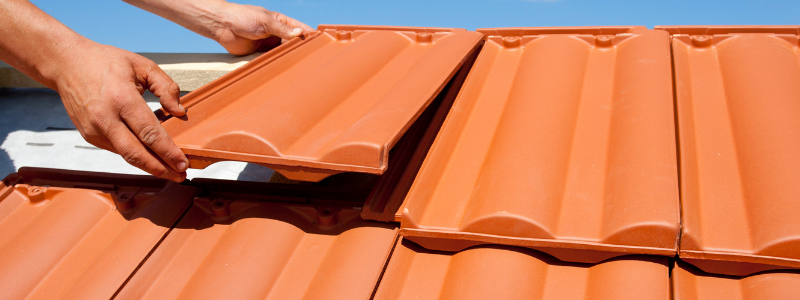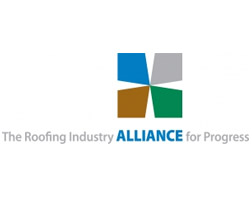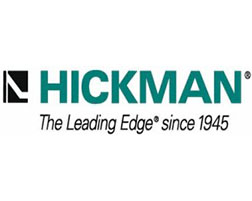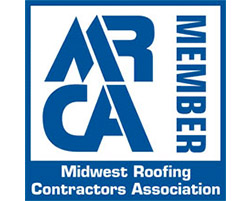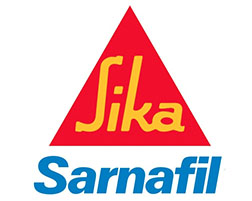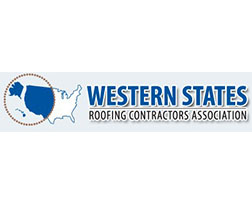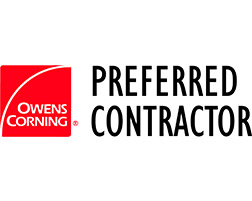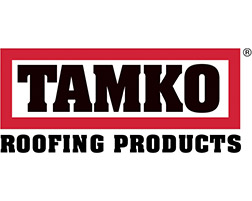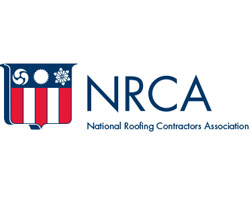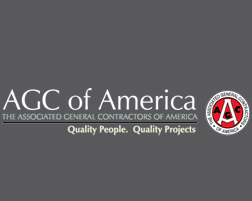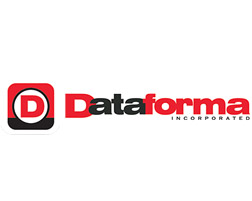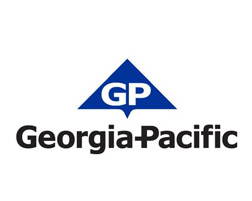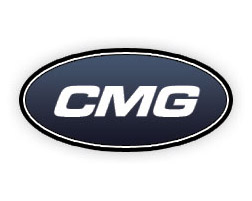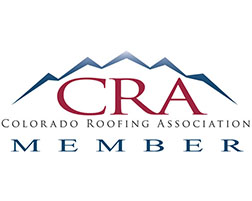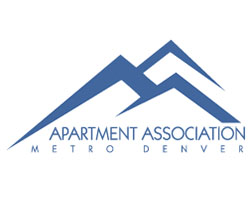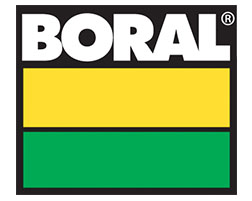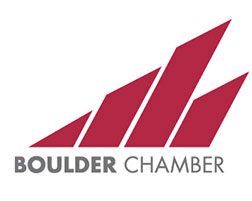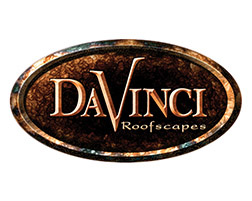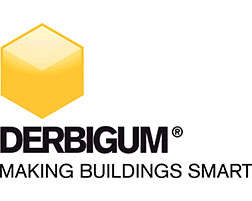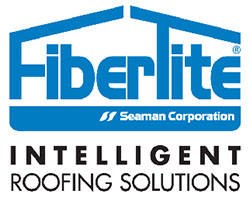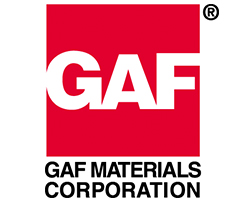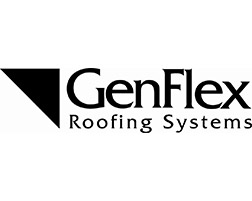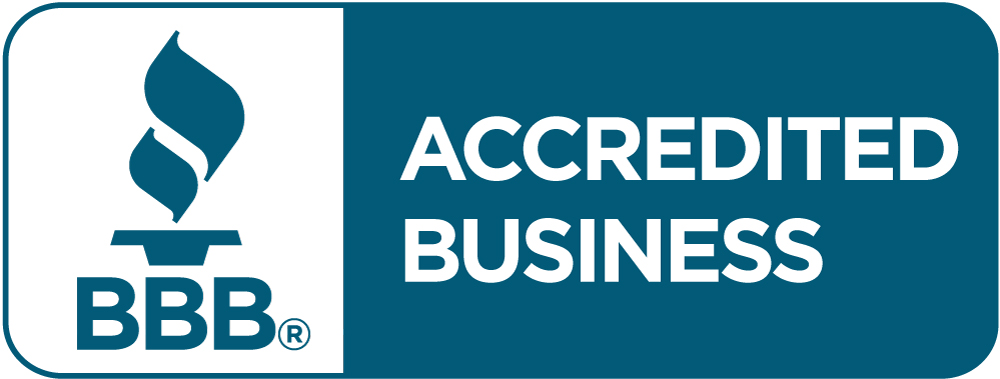Most Durable Roofing Material
Colorado has three hundred days of sunshine. While sunshine is very appealing, the blazing heat and UV radiation can wear down even the most durable roofing materials. To combat Colorado’s challenging weather conditions, it is important to choose the most durable roofing material and to ensure it is all expertly installed by a roofing professional knowledgeable about Colorado’s weather challenges. Colorado’s higher altitude, air pressure, solar radiation, density, oxygen, and temperature affect the longevity of your roof.
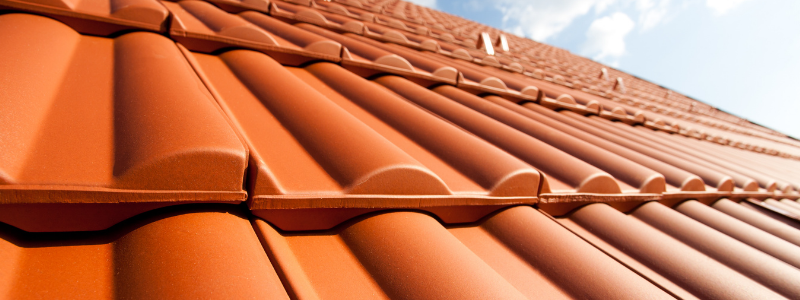
Most Durable Roofing Material Choices
The following are some of the most durable roofing materials that are recommended by our Colorado roofing specialists:
Asphalt Shingles
The lifespan of asphalt shingles is between fifteen and thirty years. Because of this and their reasonable price, they are a popular roofing choice. To ensure durability, choose shingles with a good hail rating.
Asphalt shingles are also recyclable so they don’t fill landfill sites.
Wooden Shakes
Wooden shingles or shakes last between thirty and fifty years. Wooden shakes are constructed of fire-resistant cedar or redwood. While not as durable as asphalt, they last longer. Wooden shingles are natural insulators so they get extra marks for energy efficiency.
Metal Roofing Materials
Like wooden shakes, metal roofing materials last thirty to fifty years. Most are made of steel, copper, zinc alloy, or aluminum. While a little more expensive than wooden shakes, metal roofs are significantly more durable.
Because they are impact-resistant, metal roofs are a good choice for Colorado’s climate. Metal roofs are also more maintenance-free than many other roofing materials. Metal roofs also act as natural insulators, keeping homes cooler in hot weather and warmer in Colorado winters.
Metal roofing materials are totally recyclable and are made from recycled materials.
Plastic Polymers
Plastic polymer roofing materials have a lifespan of over fifty years. While they look like slate or wooden shingles, polymer roofs are incredibly durable. They are also maintenance-free.
Plastic polymer roofing materials withstand Colorado weather challenges.
Highly energy efficient, plastic polymer manufacturers use recycled materials. Ideal for Colorado’s high rates of sunshine, plastic roofs reflect energy, keeping homes cooler in summer and warmer in winter.
Slate
A slate roof can last between seventy-five and a hundred and fifty years. Slate is the most costly and the most durable of the durable roofing materials. Slate is fireproof. The highest winds and most severe Colorado snowstorms don’t phase slate roofs. However, slate tiles can crack under the weight of snow or ice. It is vital that it be applied by a roofing specialist.
Because slate needs to be replaced so infrequently, it is much better for the environment than many other roofing materials. Slate is also naturally occurring, so no toxins are involved in the manufacturing process. The densest of all roofing materials, slate is also the best insulator.
Solar Glass
If it is properly installed and cared for, solar glass roofing will last a lifetime.
Solar glass roofing comes with a lifetime tile guarantee. It can withstand the challenges of Colorado weather.
Solar glass roofing tiles are highly energy efficient. While relatively expensive to purchase and install, solar glass often comes with a tax credit. Not only is solar glass energy efficient. It generates its own energy. Thus, it is highly sustainable.
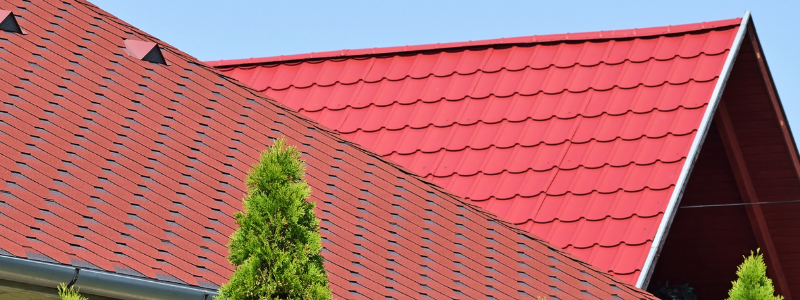
Longevity Trends
There are certain roofing material trends that are taking commercial and residential properties by storm right now.
Metal Roofs
Metal roofs are in demand once again. They are popular because of their visual appeal, versatility, function, and durability. Metal roofs enhance the curb appeal of homes and businesses. Constructed of steel, aluminum, alloy, or copper steel roofs offer a wide variety of textures and shapes. They prevent leaks and repel snow and rain. Their longevity offsets the upfront costs. Metal roofing is some of the most durable roofing material on the market.
Asphalt Shingles
Roofing trends come and go but asphalt shingles remain another most durable roofing material. They are both flexible and affordable. They adapt to almost any weather. Thanks to technology, asphalt shingles are now available in a stunning array of styles and colors.
Roof Aesthetics
Roofs no longer blend into the background. They make a statement about the home and the owner. Homeowners are changing up their roof colors to showcase their homes. Owners choose eye-catching hues like black, gray, silver, or bronze.
Roof Coatings
Silicone roof coating—once a part of commercial buildings—has become popular in residential roofing. This material alters the roof’s appearance in just two coats. Silicone roof coatings also provide longevity as the protective coating offers leak-proofing.
Solar Energy
Solar power lightens the carbon footprint as the roofing materials are energy efficient. Moreover, the newest solar panels are smaller and less expensive. Called photovoltaic shingles these solar panels now mimic the look of traditional roofing materials.
Cool Roofing Materials
Cool roofs are a popular response to environmental issues like global warming. Constructed from energy-reflecting and energy-absorbing materials, cool roofing materials reflect and/or absorb heat in response to weather challenges.
Synthetic Materials
Eco-friendly, synthetic roofing materials are increasing. Created of recyclable materials like rubber and plastic, they can offer options in shapes, sizes, and colors. Synthetic roofing materials are very durable even in Colorado weather conditions. Mimicking slate or wooden shakes, synthetic materials are aesthetically pleasing, durable, relatively inexpensive, lightweight, and easy to install and maintain.
Green Roofing Options
Green roofs offer a way to incorporate beauty and function. Atop businesses and homes, owners have incorporated greenery by adding a rooftop garden, patio, or workspace. These rooftop spaces are very durable and protect your home from weather challenges while at the same time offering natural shade and insulation.
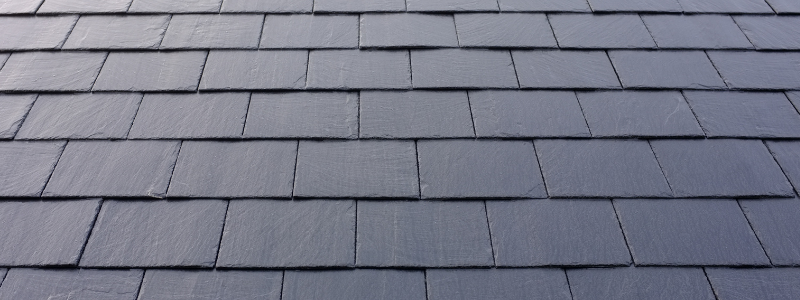
How to Make Your Roof Last Longer
Your roof is an investment in your family’s comfort. Proper maintenance will ensure that it also retains the curb appeal and structural integrity of your asset. Here are some ways to extend the longevity of your roof.
1. Avoid Power Washing
This may seem like a great way to remove grime and debris but it also removes or loosens roofing materials. Use a broom, roof rake, or leaf blower to remove dirt and moss. Better yet, have a professional clean your roof at least twice a year.
2. Check Ventilation
Poor ventilation can cause condensation and rotting wood. Mold and mildew can develop. This is dangerous to the health of your home and its occupants.
3. Keep Gutters Clean
Check gutters at least once a season. Remove debris. This will prevent water buildup and roof leaks.
4. Check Insulation
Insulation helps prevent ice dams and roof leaks. Consider installing a self-adhesive layer to protect against ice and water on your roof.
5. Protect Against Severe Weather
If you live in an area that experiences hurricanes, severe thunderstorms, buzzards, or tornadoes, fortify your roof with seal decking and ring-shank nails. Lock roof edges with metal flashing.
6. Regular Roof Inspections
Have a knowledgeable roofing professional check your roof for damage or debris at least twice a year.
Why Choose B&M Roofing?
Just as it is crucial to select durable roof materials, it is also important to choose a roofing specialist that understands Colorado weather challenges.
B&M Roofing has been a Colorado-owned company since 1947. We provide reliable, meticulous service to thousands of Colorado homes.
Licensed and insured B & M roofing specialists have a proven commitment to excellence.
Hip Roof vs Gable Roof
Whether we’re talking about a commercial or residential roof, there is a wide variety of roofing styles and materials. Some of the most common styles of roofs are hip roofs and gable roofs. But what are the differences? What are the pros and cons? Here we compare and contrast a hip roof vs gable roof.
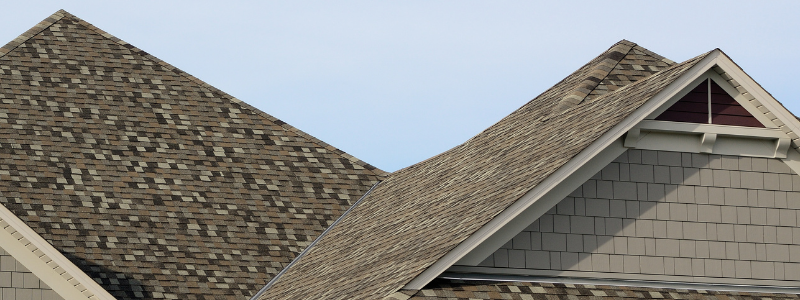
What is a Hip Roof?
A hip roof or hipped roof has all sides slope downwards to the walls. Usually, the pitch is gentle.
Popularity
Hip roofs are a favorite North American roof style. Home and business owners like the hip roof because it has a clean, modern look and it is very durable.
Cost
Hip roofs generally cost more than gable roofs. The design is more complex and uses more materials.
The average cost of a hip roof is between $20,000 and $50,000. Variations depend on the slope, material, pitch, and roof area. Typical costs are between $8 and $12 a square foot.
Advantages of a Hip Roof
When comparing the advantages of a hip roof vs gable roof, hip roofs are more stable than gable roofs. The inward slope of all four sides is what makes it sturdier and more durable. This is a definite advantage in climate extremes. Hip roofs are excellent for both high wind and snowy areas. The slant of the roof allows snow to slide off easily leaving no standing water.
Hip roofs offer the option of extra living space. You can add another story by installing dormers or crow’s nests.
Hip roofs can be built in variations including:
- Simple hip: Also known as a square hip roof, the simple hip is the most common type of hip roof. It has a polygon on two sides and a triangle on two other sides. The sides come together at the top to form a simple ridge.
- Pyramid hip: Also a simple hip roof design, the pyramid hip is so named because it looks like a pyramid. There is a single peak at the top. A common example is a pyramid roof atop a gazebo. This is also called a pavilion roof.
- Cross hipped: Similar to a cross gable roof, this design is often used on homes with different wings. The line where the two roofs meet is called a valley.
- Mansard roof: On a mansard roof, each side of the roof has two slopes with the bottom slope steeper than the top slope.
- Combination roof: This design is similar to the mansard roof except that it flares at the bottom completely around the roof. The lower level of the roof is at a much lower pitch.
- Jerkinhead roof: Also known as a half-hipped roof, this design has two sides shortened.
Downsides to a Hip Roof
Hip roofs are more expensive to build than gable roofs.
The hip roof is a more complex design that requires more building materials and labor. If dormers are added, this creates seams and valleys. These must be carefully sealed and checked or they may pose a problem with rainwater accumulation and leaks.
The flashing on the end walls of the dormers must be properly and securely installed.
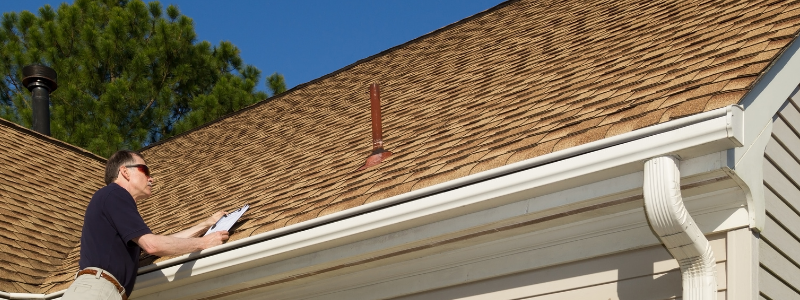
What is a Gable Roof?
The gable roof is shaped like an A. Also known as pitched or peaked roof, the gable roof is characterized by its triangular shape at the end. This is known as a gable.
Popularity
Gable roofs are one of the most popular types in many American communities. They are seen on New England and east coast Canada homes. Famous examples include Nathaniel Hawthorne’s The House of Seven Gables and Lucy Maud Montgomery’s Anne of Green Gables settings.
Cost
The average cost to build a gable porch roof is between $16 and $30 a square foot. If the slope is higher or the home or business has an unusual layout, costs may increase.
Advantages of a Gable Roof
If you live in an area that gets lots of rain or snow, gable roofs are excellent for shedding moisture so leaks do not occur.
The attic or vaulted ceiling space creates better ventilation. This decreases condensation, mold, or mildew.
Gable roof’s simple design makes it less expensive and labor-intensive than many other roof designs.
Gable roofs can be constructed in a variety of designs including:
- Side gable: two equal panels or pitched sides at an angle.
- Crossed gable: two gable roof sections meet at the right angle. Crossed gable is often used in Cape Cod and Tudor houses.
- Front gable roof: at the entrance of the house. This is often used in Colonial style homes.
- Dutch gable: a mix of gable and hip roof. The gable roof sits atop a hip roof.
- Gambrel: This is a gable version of the mansard roof. Gambrel roofs are popular on barns.
- Saltbox: This roof design is found in many colonial-style homes. It features an open gable roof. One end extends farther than the other. This results in an asymmetrical roof. More space is thus created.
Disadvantages of a Gable Roof
If you live in an area where high winds or hurricanes are likely, a gable roof may not be the best choice. Gable roofs must be carefully constructed with good support or the roof may collapse in high winds. Strong winds may also peel roofing materials away from gable roofs. The overhang can also allow winds to create an uplift which will detach the roof from the walls.
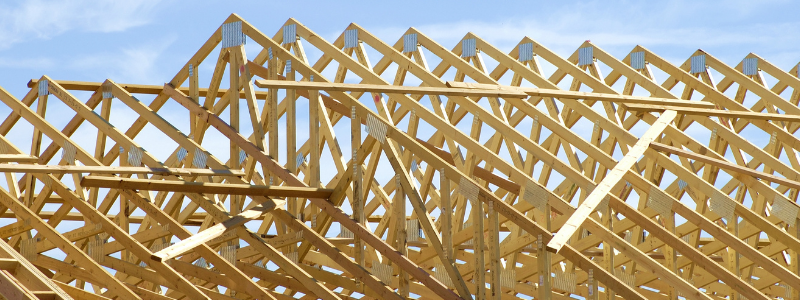
Hip Roof vs Gable Roof
Both types of roofs have pros and cons. In making a decision, consider things like curb appeal, cost, and weather challenges.
A hip roof is slightly more costly than a gable roof. That is because the design requires more roofing materials. The design also means that there is more waste due to cutting for the angles and ridges on a hip roof. However, a hip roof is easier to build than a gable roof so the labor costs will be lower.
If you want to make use of the attic space for extra bedrooms or office space, a hip roof allows you to add dormers.
Gable roofs offer better ventilation. This may result in less condensation and less likelihood of mold or mildew.
Hip roof designs may offer some insurance benefits in some cases.
When it comes to wind performance, the hip roof is superior to the gable roof. However, in snowy areas, the gable roof is steep enough to allow snow to slide off where snow builds up on a hip roof.
Why Choose B & M Roofing?
Regardless of the roof design you choose, regular roof system maintenance is critical to the longevity of your roof. Choosing an experienced roof inspection, repair, and replacement specialist who knows the weather conditions of your area will ensure the health of your roof.
With seventy-five years of successful roof maintenance in Colorado, B & M Roofing has a proud record of meticulous service.
For more information about roof maintenance, repair, and replacement on your Colorado home or business or to inquire about a free estimate, call 303-816-0068 or fill out a contact form.
Questions to Ask a Roofing Contractor
Most people only purchase a new roof a few times in their lives, so it’s normal to feel uncomfortable with the process. However, knowing how to choose a roofer can help ensure a successful investment for your residential roof repair or replacement, or commercial roofing needs. There are certain questions to ask a roofing contractor that are critical, a few of which we’ve highlighted below.
While it’s important to only trust reputable contractors who are preferably members of the Colorado Roofing Association, knowing the best questions to ask a roofer when you receive estimates will help eliminate uncertainties and flush out problems before the job.
Unfortunately, there are various tactics that unethical roofing contractors take to secure jobs and then don’t adhere to the quality of workmanship.
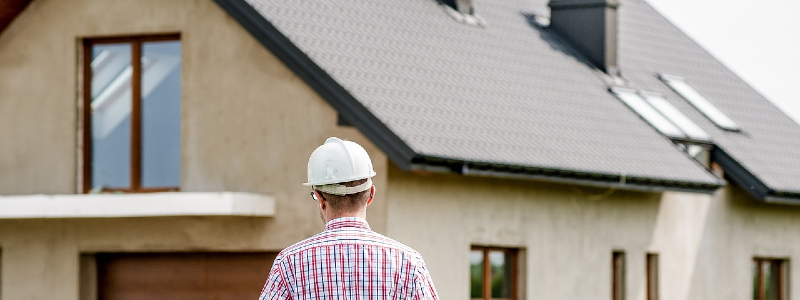
How to Choose a Roofing Contractor
Any reputable roofing contractor will answer any question you pose. Never walk away from a meeting with an estimator feeling as if you aren’t clear about any of the processes or costs of your roofing job. Roofing services are extremely important to your home or business health, not to mention they come at a high cost. Knowing the questions to ask a roofing contractor can mean the difference between a quality roof that lasts versus a quick job that will require frequent repairs.
Choosing a roofer may require some upfront homework, but it can make all the difference. For example, you should learn a little more about the components that make up a roof, so you can better understand how to apply that information to your requirements. Always be sure to do the following:
- Ask your roofer to show you photos or sketches of how certain problem areas will be handled.
- Request more information on how a roofing contractor’s process works from start to finish. You should have a solid understanding of how they operate when arriving at the job site, plus anything you should do to prepare the space for the work.
- Inquire whether your roof has any areas where structural changes should be made in order to avoid issues later.
- Discuss any maintenance tips that you can fulfill without hiring a roofing contractor. This also helps you to extend the lifetime of your roof.
- Questions to ask a roofing contractor also include any tips on whether your old roof needs to be removed completely.
- If you have ideas about moving to green living or want to be more energy-efficient, be sure to ask your roofing contractor whether or not they can supply recycled materials, and whether their end product (new roof) is Energy Star rated.
For quality Colorado roofing services from trusted experts, contact us directly at (303) 443-5843 to set up your free estimate.
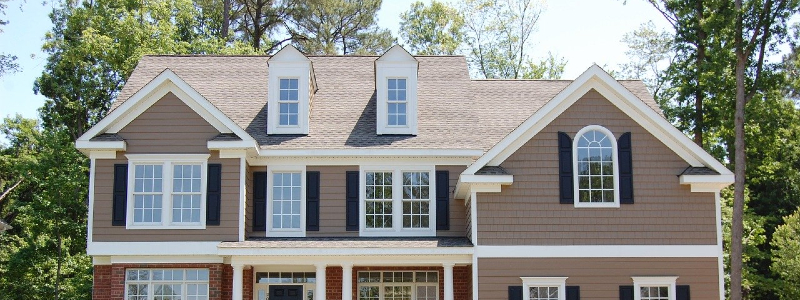
Best Questions to Ask a Roofing Contractor
The best questions to ask a roofing contractor before hiring include:
-
Are you licensed and insured?
- Avoid fly-by-night storm chasers and unskilled roofers by only selecting companies who are licensed. Protect your home and your liability by working with contractors who carry general liability insurance to protect your home and worker’s compensation insurance to protect you if a worker is injured on the job.
-
Do you use subcontractors?
- If a roofing company doesn’t use its own employees for the job, there’s no guarantee they’ll be skilled, licensed, or insured if they’re not employees of the company you deal with.
-
How do you clean up your job site?
- Replacing a roof is only half of the job. Removing layers of shingles if necessary as well as sheet metal scraps, nails, and pieces of roofing material can make or break a roofing project. Learn how your company plans to remove it as well as protect your landscaping from debris.
-
Can I contact references?
- Any time a roofing company can’t offer names of satisfied customers who are willing to vouch for it, it’s a red flag.
-
Do you provide a warranty?
- Roofing materials are covered by manufacturers’ warranties, but only if installed correctly. Your roofing contractor should warranty its labor to provide you with full protection.
-
Do you offer a written estimate?
- Your written contract should include costs of materials, labor and necessary building permits, workmanship and materials warranties, and proof of the contractor’s license.
-
Do the estimates you provide detail my current issues?
- Inquire whether or not you should expect supporting materials like photos or sketches with the estimates. At a minimum, a trusted roofing contractor will be quick to point out specific details on your roofing repair or replacement needs.
-
How long will my project take?
- Roofing work can feel like a huge undertaking for most homeowners. It’s a good idea to get an ETA for completion on your roof project. As mentioned above, you should also get an idea of things you should do to prep the area for your contractors. Get a completion date also help you to evaluate if roofers are incredibly busy, as some may decide to rush projects (which always come at an expense to homeowners and commercial building managers).
-
What happens during unforeseen weather changes?
- Good questions to ask a roofing contractor usually begin with weather. Understandably, you wouldn’t want your home to be exposed to harsh weather conditions or the elements. Your roofing contractor should be prepared for various scenarios.
-
What do you recommend for roofing materials?
- Most real estate owners will have a preference for roofing materials. Believe it or not, though, the roofing industry changes regularly and new materials are often introduced each year. Get some advice on the latest technologies being used, and request an assessment for the most beneficial type of roofing material for your home or commercial building. After all, roofs are not just made to improve home health and protect you, they are also aesthetically pleasing too.
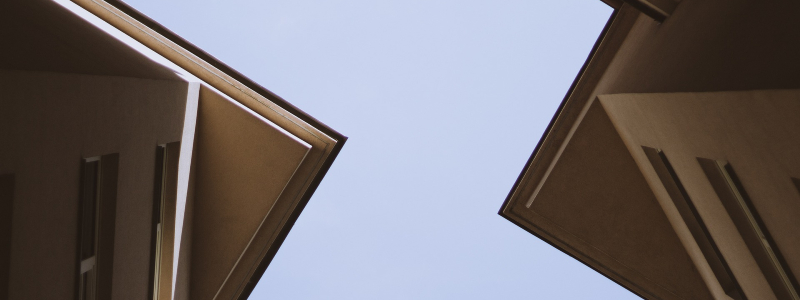
While these are the best questions to ask a roofer before you hire one, they’re not the only ones your estimator should be able to answer. Questions about timing, length of the job, and logistics should all be considered.
Ready to hire a reputable roofer with over 70 years of experience? Contact B&M Roofing of Colorado online or by calling (303) 443-5843.
Flat Roof Maintenance
No matter the type of roof, it requires routine maintenance and checkups to make sure that the roof is doing what it needs to and isn’t compromised. With flat roofs, this is no different. However, flat roof maintenance looks a bit different than that of other types of roofs.
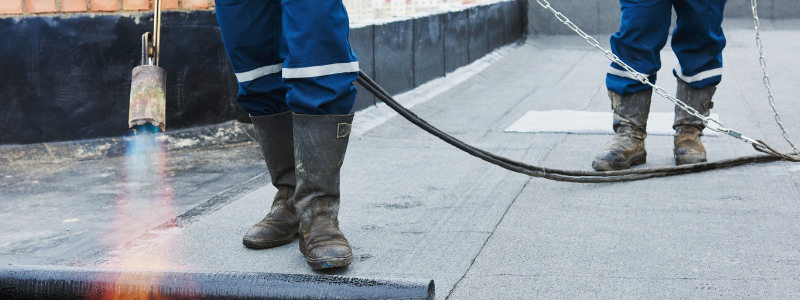
What is a Flat Roof?
A flat roof is, technically, not flat. It is almost level. Its pitch or slope is very low. Flat roofs have up to a ten-degree slope. They need some slope to allow water to drain.
Flat roofs have been around a long time. They were used in ancient times in arid climates. As factories, warehouses, and other large industrial structures began to appear, flat roofs became both practical and economical.
Benefits of a Low-Slope Roof
If you have a large factory, warehouse, or other industry, a flat roof may be required to cover the vast expanse.
Flat roofs give you space. Gardens or rooftop patios have been built on this space. Plants provide food and aesthetics on some flat roofs.
Flat roofs require less material to build. Construction and repair costs are lower because they are faster to erect and repair. Some homeowners or business owners have turned sections of their flat roofs into restaurants, patios, or working gardens. This adds more living or business space.
Flat roof spaces can provide beauty and give your building additional weather protection.
Flat roofs can save money on energy bills. This is especially true in Colorado climates where seasons bring special heat and cold challenges. Sloped roofs may trap heat or allow cooled air to escape. However, a flat roof leaves less space overhead where hot or cold air can collect.
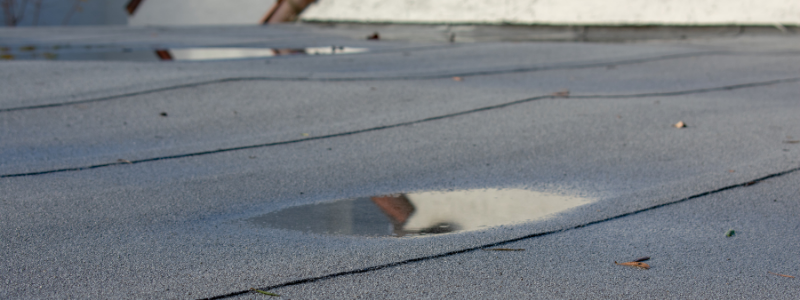
Disadvantages of Flat Roof Construction
The news about flat roofs is not all good. They are unreliable in Colorado winter weather. In colder temperatures, water will collect on flat roofs. This can result in an accumulation of ice or snow. You may need to consider weatherproofing options.
Flat roofs pose a greater chance of earlier replacement. Where sloped roofs, with proper inspection and maintenance, can be expected to last twenty years or more years, flat roofs often require replacement every ten years. The National Roofing Contractors Association notes that that business and homeowners often opt for roofs with a greater pitch because of the increased cost of more frequent repair and replacement of flat roofs.
Turning a flat roof into a patio or garden has appeal for those who are trying to be eco-friendly. However, there is an extra weight involved. Plants can also penetrate the roof, creating cracks, leaks, or mold issues.
Flat Roof Maintenance Tips
If you have decided that a flat roof on your home or business is appealing, there are specific maintenance steps you need to take:
Perform Regular Inspection
All roofs should be inspected once or twice a year. However, flat roofs should be inspected every two or three months. Roof inspection specialists will make sure everything is intact.
You can do some of these monthly inspections yourself since flat roofs are easy to walk on. However, a professional roof inspection specialist should do a formal inspection at least twice a year. What are you looking for?
Check for things like:
- Blisters in the roof surface
- Holes in the roof surface
- Loose seams
- Soft spots
- Signs of rust
- Cracks in the surface or seams
- Water pooling
- Ice or snow buildup
- Signs that the drainage system for water is clogged
- Leaks or cracks in seams
- Gutters clogged with debris
If any of these occurs, it is time to call us. We provide free estimates.
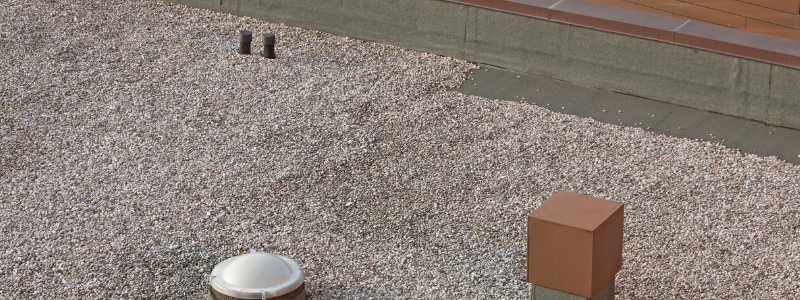
Keep Roof Clear
Because of their low pitch, flat roofs collect debris, leaves, twigs, and dirt. Debris is unsightly. However, more importantly, it leads to moisture retention. This compromises your roof’s lifespan and can lead to an accumulation of algae, bacteria, and mold.
Keep Shrubs and Trees Cut Back from the Roof
Overhanging shrubs and trees aren’t healthy for any roof but they are particularly troublesome for flat roofs. Overhanging plants lead to more debris and thus the need to clean off the roof more frequently. Falling limbs can also damage the roof. Moss from nearby trees can accumulate on the roof. Once there, it will begin to grow. It is unsightly but also not good for the health of your roof.
Ensure Proper Drainage
Because of their lack of pitch, flat roofs accumulate water, ice, and snow. Pooling water indicates poor drainage. Have a roof inspector check to make sure your drainage system isn’t clogged. Cleaning of the drainage system should be part of regular inspection.
Check for Stress Points
Flat roofs may buckle or sag, or crack because of too much weight. This could be from water, ice, snow, debris, or heavy roof cleaning equipment.
Repair Leaks Immediately
All roofs may develop leaks. Flat roofs accumulate water faster so they are predisposed to leaking. If you notice a leak, call a roofing repair specialist immediately. He will assess the situation and make needed repairs before water has a chance to accumulate in walls or ceilings.
Avoid Weight Buildup
Water, ice, snow, debris, can all add weight. This puts stress on your flat roof. It can cause cracks, flat spots, or sagging. It can even cause roof collapse. To avoid undue weight, remove ice, snow, or debris.
Be Vigilant
The number one reason for issues with flat roofs is negligence. Small blister, crack, leaks, puddles, or soft spots can quickly become costly problems if ignored.
Plan for Replacement
Most flat roofs—no matter how well cared for—have a lifespan of between ten and twenty years. If repairs become frequent, it may be time to replace that roof.
Acknowledge Colorado Challenges
Colorado weather presents roofing challenges. Altitude affects materials. In Colorado’s air pressure, solar radiation, density, oxygen, temperature, and atmospheric water vapor change. This causes extra stress on a flat roof.
Colorado snow and ice accumulation can cause lumps of ice form to form at the edge of the flat roof in winter. Warm days and freezing nights invite the formation of an ice dam. Melting snow is then blocked from draining. Roof leaks and water dripping into your home or business will follow.
Colorado has three hundred days of sunshine. Constant heat will cause a flat roof to blister or crack. Heat and UV radiation wear down many roofing materials.
B&M Roofing – Experts in Flat Roof Repair & Replacement
Because Colorado’s climate presents roofing challenges, it is wise to choose a roofing specialist who understands what roofing materials will withstand the climate.
B & M Roofing is a Colorado-owned company with seventy years of successful service. We have a reputation for being fast, efficient, and economical. When it comes to flat roof maintenance, repair, and replacement, our roofing specialists know what they are doing.
B & M Roofing provides meticulous service to thousands of Colorado homes and businesses each year. They are licensed and insured roofing specialists committed to excellence.
Each roof inspection and repair receives the knowledge, experience, and expertise of a local team, dedicated to roofing repair and replacement.
Metal Roof Fading
If you have a metal roof or are considering getting one, you should be prepared for it to fade and chalk over time. However, this is just one thing to be aware of when deciding whether to use a metal roof or not. This article will take you through some of the benefits of using metal roofs, what metal roof chalking and fading actually is as well as how to prevent it, and what the best colors may be for a metal roof.
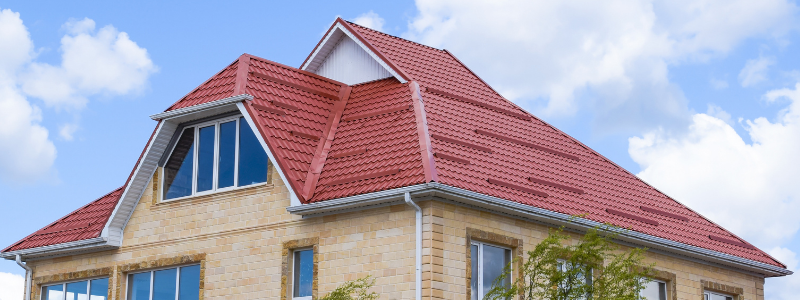
Why Use Metal Roofing?
There are many reasons why somebody might choose to go with a metal roof.
They are extremely durable and long-lasting, especially when compared to other traditional roof materials such as asphalt.
You also have the ability to customize the color of your metal roof’s paint, as they can be painted black, red, green, pink, or anything you’d want. In comparison, most asphalt roofs are very limited in their color options.
In addition, metal roofs are also very energy efficient: A basic, unpainted metal roof is estimated to save a traditional home up to 40% in energy costs. Metal roofs reflect sunlight, and therefore, can help keep buildings cool in the summer without the excessive use of air conditioning. They also provide excellent insulation in the winter.
Sustainability is another reason why people may choose to use metal roofing. Since metal is an easily recyclable material, many metal roofs these days are sourced from recycled metal. Additionally, since metal is an extremely durable material, you will need to replace it less often than you would with other roof materials, thereby reducing the total waste your home or business produces.
Lastly, you may want to use metal roofing simply because it looks cool! Metal can give a home or office a sleek, unique look that will set it apart from other buildings in the area.
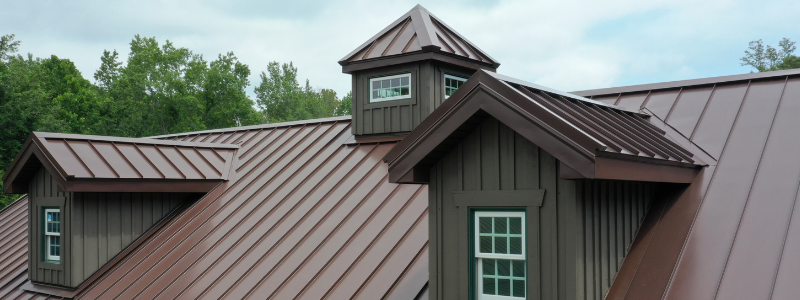
How Long do Metal Roofs Last?
With proper care, metal roofs are expected to last anywhere from 40 to 70 years.
In comparison, asphalt normally only lasts between 12 and 20 years, and wood shingles will last, at an absolute maximum, about 45 years.
Metal roofs are the most durable and long-lasting roof materials currently being used today.
Because metal roofs are so long-lasting, they will be significantly cheaper in the long run. Currently, metal roofs cost about twice as much as asphalt roofs, however, when you factor in that metal roofs will last up to 5x as long as asphalt, it’s clear that they give you much a better bang for your buck.
Metal roofs will often last longer, especially with proper maintenance. If you believe your roof is in need of service or repair, the roofing experts at B&M Roofing will happily come to give you a free estimate.
What is Metal Roof Fading?
Over time, environmental elements such as sun, rain, snow, and pollution will interact with and deteriorate a metal roof’s paint pigments.
A common misconception people have is that metal roof fading is causing damage to the roof, which is not true.
Metal roof fading is a natural process, as overtime, any paint color will fade with exposure to harsh elements.
However, although fading in and of itself isn’t damage to a roof, if it is not addressed, this can shorten your roof’s lifespan.
Paint protects the actual metal, and when the paint is worn down, the metal roof itself will wear down faster. This is one reason why you will want to make sure you are using high-quality paint for your metal roof.
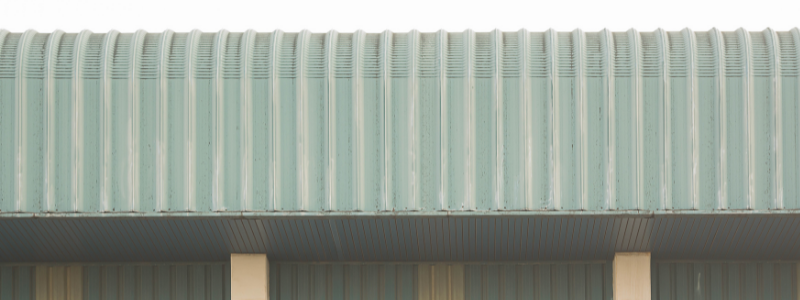
What is Metal Roof Chalking?
Metal roof chalking is the formation of whitish residue on painted or coated metal.
Unfortunately, this whitish residue is not actually true chalk- if it were, you’d definitely see a lot more roof repair companies dabbling in producing sidewalk chalk.
Metal roof chalking occurs through a similar process as metal roof fading.
As the paint or resin on your metal roof wears down, it will turn white and chalky, hence the name.
Once again, metal roof chalking isn’t indicative of damage being done to the roof.
But, since paint and resin are protecting the actual metal, unaddressed chalking can shorten a metal roof’s lifespan.
What Colors are Best for Metal Roofs?
The most important thing when selecting what color to paint your metal roof is to ensure that a high-quality metal paint is used.
If you’re overly concerned about chalking and fading, lighter, inorganic paint colors will chalk and fade slower, plus it will be less apparent when they do.
For example, it will be really difficult to see a light grey fade when compared to vibrant red color. Additionally, different paint colors can have different benefits- for example, a lighter roof will reflect more heat than a roof painted black, and therefore keep your home cooler in the summer.
Ultimately, chalking and fading are just one factor you should consider when making a decision about what color to paint your metal roof.
If you really strongly want a darker, or more uniquely colored roof, choose that color, and just make sure that you’re using high-quality paint.
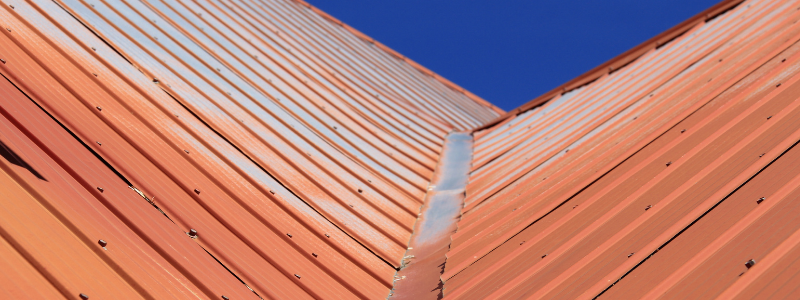
How to Prevent Metal Roof Chalking and Fading
Chalking and fading is a natural process, but there are specific steps that you can take to delay and mitigate their effects.
Lighter, inorganic paint colors will chalk and fade slower, and it will be less apparent when they do. In addition, choosing high-quality metal paints can, and will make a gigantic difference when it comes to protecting your roof.
You can also do the best you can to avoid exposure to certain elements, such as sunlight, moisture, and pollution. For example, roofs that face north are exposed to significantly less direct sunlight than roofs that face south.
However, roofs are obviously meant to provide you with protection from elements!
Finally, a great step to take is to purchase a roof warranty and ensure that the warranty you purchase covers chalking and fading.
Roof chalking and fading is a natural process that will happen over time, but a proper warranty will address chalking and fading. This will help protect your metal roof’s lifespan while keeping your roof looking the way it’s supposed to.
If you’re interested in installing a new roof for your home or business, look no further than B&M Roofing.
We are true experts in roofs, having skillfully provided reliable roof coverings since 1947. We can give you a free estimate, & will work with you every step of the way, from determining which roof (metal or not) is best for you, installing your new roof, and providing regular maintenance.
Curled Shingles
The biggest part of roof maintenance is ensuring all your shingles are properly in place. However, as asphalt shingles age, you might notice their corners start to curl inward or out, which can become a little bit of an eye-sore for homeowners or neighbors passing by.
However, it’s important to note that the impact of curling shingles goes beyond aesthetics. Curled shingles can also result in leaks, structural damage, and mold infestation, creating damages that go beyond your roofing.
If you spot any signs of damage or wear, call B&M Roofing for immediate action. Our roofing professionals will determine which shingles are damaged and need repair.
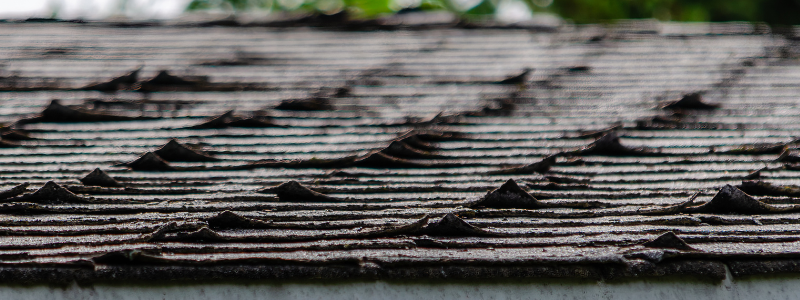
What Are Curled Shingles?
Curled roof shingles will have raised at the edges of the shingle tab. This can occur at the lower edge or even on two sides of the tab. If the center of the shingle is concave, it is referred to as “cupping”. If the edges of your shingles are raising outwards, it is described as “curling”. Both of these can occur on the same roof.
Remember, for your safety, do not walk on curling shingles. It’s best to have your roof observed by a professional or from a secure ladder.
What Causes Shingles to Curl?
The most common cause of curling shingles can be attributed to turbulent weather and strong winds. Additionally, weather fluctuations can cause shingles to loosen up or shrink, which can lead your roof to look uneven.
Poor attic ventilation can also cause shingles to curl. A poorly ventilated attic will trap moisture from the air in its decking. This excess moisture can cause the shingles above to curl as a result.
Curling shingles might also be a result of a poor installation job. There are specifications that many roofing manufacturers follow. They include the number of nails per shingle and nail length. Failure to adhere to these specifications can cause your shingles to prematurely curl.
Additionally, homes with multiple layered roofs (also known as an overlay) might also be more prone to premature shingle curling, especially if the first roof layer is full of unrepaired damages. In most cases, the second layer of the roof isn’t secure enough and shingles are easily curled or blown by high winds and extreme weather.
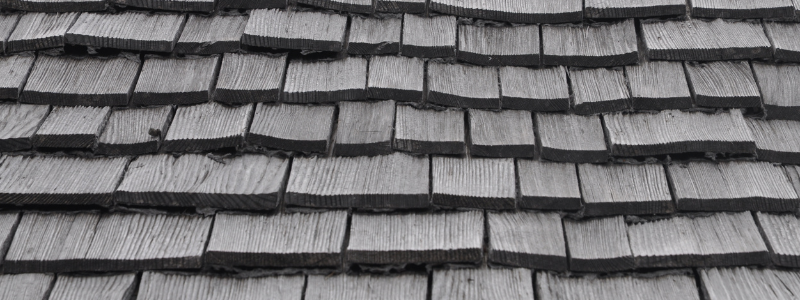
What Damages Can Curled Shingles Have on Your Home?
If shingles aren’t fixed and repaired immediately – water and moisture and seep underneath the shingles, which can rot the wood and foundation of your home. A damaged foundation can lead to leaks, less insulation inside the home and can even promote mold infestations and affect the air quality of your home.
Dry and wet rot fungi can also form as they can be destructive for your home. Dry rot can spread quickly throughout the structure’s fabrics and masonry, causing fundal decay. Wet rot is more localized but can also cause structural damage if left untreated.
To avoid any resulting damage to your home, it’s recommended to have your roof inspected regularly. The cost of repairing a severely damaged roof will be significant, especially if damages and needed repairs are ignored.
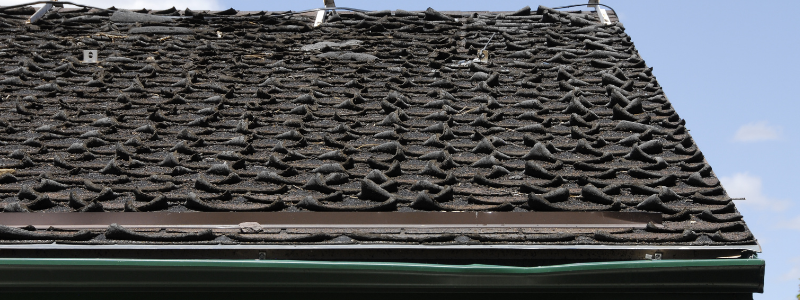
B&M Roofer’s Guarantee
At B&M Roofing, we can inspect your shingles and properly set you up for repair or full replacement. If your roof looks sound but you aren’t sure about its state, call us anyway for an inspection. It’s best to catch small repairs before bigger problems escalate.
B&M Roofing is Colorado’s most trusted roofing repair and replacement company. Our reliable, and experienced team of roofing technicians are skilled with various materials and roof types and can help you execute many types of home improvement projects.
Contact us here or give us a call at (303) 443-5843.
Spring Roofing
Spring is in the air and that means … making sure your roof made it through the winter without damage.
The winter and harsh weather of Colorado can really wear down your roof, whether it’s a typical asphalt shingles roof, metal roof, or any other type of roof. Snow can cause damage like ice dams and wind can ruin shingles and cause debris. The combination of sun and cold, dry weather can also wreak havoc on your roof.
So, when springtime comes around, it’s the perfect time to get a roof repaired, replaced, or at least, if nothing else, inspected. Better weather means better conditions to work on your roof, so spring roofing is primetime roofing.
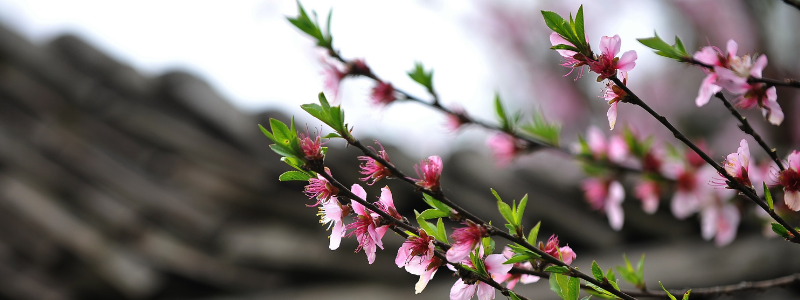
Spring Roof Repair and Replacement
Spring is a season of turning over a new leaf – a time of renewal, rebirth, and renaissance. It’s also a popular time for renovations, repairs, reorganizing, and much more spring cleaning activities. Spring roofing means repairing and replacing roofs that took damage from winter, age, or a little of everything.
Spring is a great time to get quality work done on your roof, no matter the amount of work your roof requires. It’s also a time where you find a lot of roofers that just aren’t qualified. We urge you to find reputable Colorado roofing contractors to make sure the job gets done right.
Roofs we specialize in:
- Slate
- Clay
- Metal
- Wood
- Shake
- Composition
- Shingle
We even repair and replace flat roofs on residential properties within the Front Range area.
Colorado has a reputation for frequent thunderstorms and bad weather. Spring roofing also means repairs from hail and storm damage.
Every year dozens of powerful storms roll through Denver and the Front Range and cause damage to residential as well as commercial properties.
Repair and replace your roof if needed to prevent any future damage.
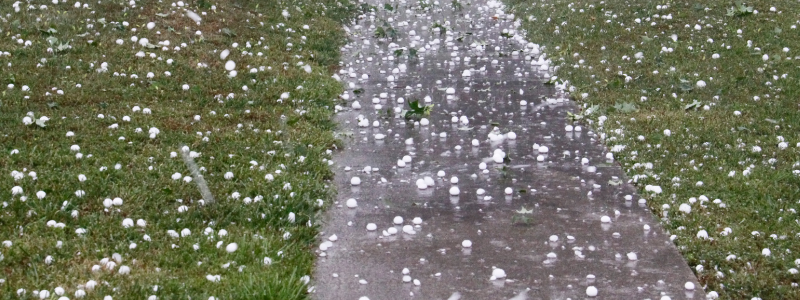
Spring Hail & Storm Damage
Hail is no stranger to Colorado and B&M Roofing contractors are helping residents recover from the hail damage to their roof. Hail storms and high winds can cause damage to roofs that need to be repaired quickly in order to avoid further damage to your property.
When a hail storm rolls through town, it’s followed by a flurry of fly-by-night roofing contractors looking to take advantage of victims of storm damage in their time of need. These contractors don’t have established roots in Denver, or anywhere in Colorado for that matter, and will leave homeowners and property owners stuck with a low-standard roofing job and little-to-no warranty.
When you need roof repair due to storm damage, make sure you get a quality Colorado roofing company that understands your community. B&M Roofing is highly qualified to help you get your roof repair or roof replacement is taken care of promptly and professionally.
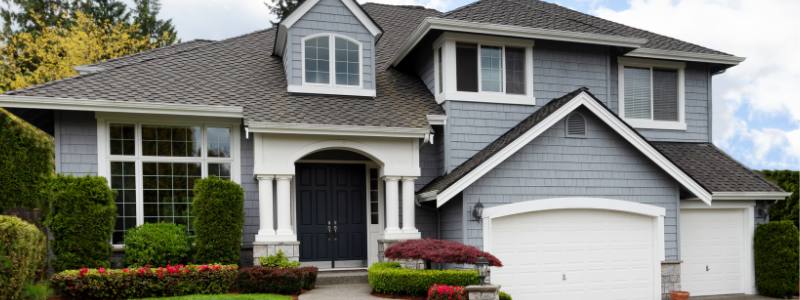
We Work with Your Insurance
We have a great reputation not only with property owners but with insurance representatives too.
We understand the insurance claims process.
We make sure you get everything your insurance entitles you to, after a damaging storm.
When storms hit the Denver area, insurance companies are busy writing checks to property owners to make sure the damage is taken care of and further damage is avoided. The good news is most property insurance policies cover roof damage due to storms and inclement weather.
The sooner you can find issues with your roof that need fixing, the quicker and less expensive they will be. It usually starts with an inspection. You can save time and money by assessing your roof for damage and call a professional roofer after inspection.
While we don’t promote homeowners and business owners getting up on their roof, there are safe ways to do so, to inspect your property’s roof.
If you are comfortable enough with doing a quick roof inspection, you can use B&M Roofing of Colorado’s spring roof inspection checklist to walk you through your warm-weather inspection.
Spring Roofing Inspection Checklist
Before you climb on the roof, however, ensure you do it safely. Place your ladder on a firm, level surface, at the angle specified by the manufacturer. Secure it to your roof, but not in a way that presents a tripping hazard. For more tips on ladder safety, visit our Ladder Safety blog.
- Gutters: Clear the rain gutters of any material that may have collected in them over the winter. Clear all debris by hand before flushing them to prevent clogs in downspouts.
- Downspouts: Use a hose to flush downspouts and loosen any material that may have become lodged in them throughout the winter. With the hose in the downspout, inspect each one to ensure it’s free of leakage that can cause water to collect around your foundation.
- Roofing Materials: Inspect your shingles or tiles for visible damage, such as cracks, tears, or missing chunks. Pay special attention to pipes and other protrusions from the roof where snow and ice may have accumulated and damaged the seal.
- Vents: Vents in your rooftop, under your eaves, or in the rafters are essential to keeping air flowing through your home. Make sure they’re unimpeded and allow air to circulate.
- Chimney: While you’re on the roof, take the opportunity to check that your chimney is still in good health. Check that masonry is intact and that white stains, similar to calcium buildup, aren’t building up, which can indicate your chimney is absorbing water.
Think you need repair or want a professional opinion about your roof’s health?
Call us at 303.443.5843 or on our Estimate Request Form to request a visit from B&M Roofing’s professional estimators.
Folded Plate Roof
Most commonly found on commercial and industrial buildings as well as mid-century modern homes, a folded plate roof is quite beneficial and useful.
Here’s all you need to know:
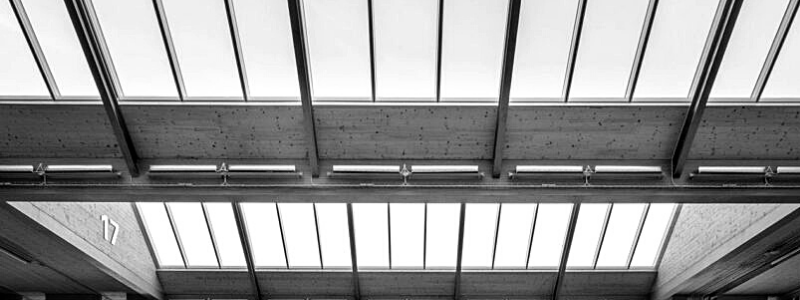
What is a Folded Plate Roof?
Folded plate roofs can be recognized as a set of flat tiles or plates. The materials are rigidly connected, inclined in different directions, while joined along their edges at the top.
What Does a Folded Plate Roof Look Like?
Modern folded plate structures are usually constructed on-site or precast of reinforced concrete, tempered glass, or steel plate. Their shapes can vary from prisms, rectangles, pyramids, to nonrectangular shapes.
Folded plate structure follows nature’s lead. You can see it in broadleaf-tree leaves, flower petals, and foldable insect wings like those of the Palm Leaf Beetle.
Origins of the Folded Plate Roof
Folded plate roofs first appeared in Germany during the 1920s. Folded plate roof construction began with immense factory buildings. These roof types were common on coal bunkers.
In 1923, Engineer Eudene Freyssinet used the first roof with the folded plate structure to build an aircraft hangar at Orly Airport in Paris, France.
Folded plate construction in central Europe was introduced to North America right after the Second World War. It quickly became popular. It was a highly accepted new form of construction for its feasibility of erection. Since then, folded plate structure’s performance and its structural clarity of analysis and design have made it a perennial choice throughout the world.
Folded plate roof technology was first employed in North America during the 1930s. It was used then mainly in the construction of warehouses.
For those who were building very large industrial structures and commercial buildings, folded plate roof construction became the preferred roofing solution.
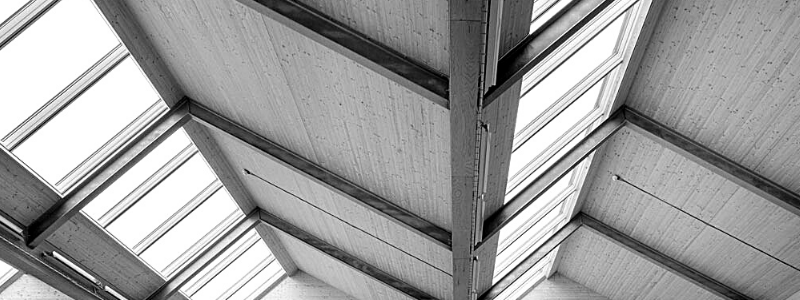
Where Are They Most Prevalent?
Folded plate roof technology has been used throughout the world. It is most prevalent where there is a concentration of large factories, warehouses, and industrial buildings.
Several have become famous examples of folded plate roof technology.
In Germany, the Auditorium Maximum der Ruhr-Universität Bochum is an example of folded cement plate technology.
The DCM Pavilion in New Delhi, India was built in 1972. This popular exhibition hall uses steel folded plate technology.
As its name suggests, Mülimatt Sports Education Center in Switzerland is a functional structure for sporting events and sports training.
It was built to address the country’s need for sports facilities. When completed in 2005, the building held two sports halls and a footbridge across the River Aar. The bridge liked the halls with outdoor sporting amenities. The structure is built of precast concrete which allows a minimal outer skin. The entry does not have internal columns. The fifty-five-meter-wide complex gives an airy, sculptured feeling.
India’s Tagore Memorial Theater or Tagore Hall provides a facility for large capacity performances. The facility has a stage and auditorium in a contemporary folded plate structure.
Built in 2017, Switzerland’s Namics Corporate Headquarters at St. Gallen has an unusual floor structure. The building’s design uses six V-shaped lightweight concrete waves only 15 cm thick at mid-span. The sixty-six-foot-high roof is bounded by a post-tensioning system and ribs that correspond to the crests and troughs of the waves.
Germany’s Rostock-Evershagen Supermarket, built in 1973, is an example of folded plate architecture used for such functional buildings as shopping malls and grocery stores. The reinforced concrete folded plate roof in such buildings provides open space for optimum display and shopping.
The Sadar Vallabhbhai Patel Stadium, built in 1950, is located in the Navrangpura. This Indian sports complex hosted the first international cricket match.
Why is the Folded Plate Roof Growing in Popularity?
Folded plate roof technology allows materials to be prefabricated and pre-stressed. The design uses available materials such as glass, steel, and concrete to create large buildings that are both secure and filled with open usable space. Both materials and labor are lower in cost because of the design.
Folded plate roofs are easy for architects to design but also offer many design options. The buildings are aesthetically pleasing yet highly functional.
Folded plate roof technology offers rigid structures that will withstand the most challenging weather conditions. Because the design builds in extraordinary weight-bearing capacity, folded roof technology is ideal for large buildings like warehouses, factories, stadiums, museums, and supermarkets.
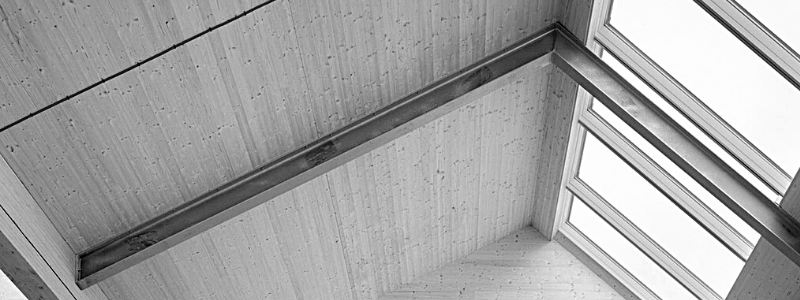
Advantages of the Folded Plate Roof
Folded plate roofs are chosen because they have a high weight-bearing capacity. Folded plate roofs are also very durable. They have extraordinary weight-bearing capacity. This is especially helpful in Colorado’s climate where there is a lot of heavy snow accumulation.
Folded plate construction requires fewer materials than other roofing types in business and commerce. This makes them a cost-effective choice.
Folded plate roofs are also faster and easier to assemble. This reduces labor costs.
These roofs can be constructed in many shapes and forms. Aesthetically, folded plate roofs are pleasing because they can take several, attractive forms.
Folded plate roofs are easy to incorporate into architectural designs.
Disadvantages of the Folded Plate Roof
There are some disadvantages. The construction of a folded plate roof requires great accuracy. Shuttering is difficult. The rise of the roof may also pose some difficulty. This roof construction demands excellent labor and close supervision of the job.
Although the basic folded plate roof construction is both rational and logical enough, there is a need for s numerical computation which can be tedious.
Why Choose B&M Roofing?
With Colorado’s sometimes challenging weather conditions, it pays to have a Colorado roofing company that understands Colorado’s unique roofing needs and concerns.
B&M Roofing offers licensed, bonded, and insured roofing experts. We are committed to restoring your roof, gutters, downspouts, windows, doors, and siding to their original state.
B&M Roofing has been providing quality roofing and repair for all types of roof styles to Colorado businesses and homeowners for nearly seventy-five years.
Knowledgeable, committed roofing specialists are proud to offer our valued customers fast, efficient, on-time and within budget residential, commercial, and industrial roofing projects.
We offer experience and informed advice on every type of roof. Our company is committed to outstanding job performance. We ensure that our clients are completely informed about current roofing products, solutions, and regulations. We are pleased to assist our customers in their roofing needs and decision-making.
To arrange for a free estimate or to get answers to any roofing questions and concerns, give us a call at 303-443-5843.
Signs of a Bad Roofing Job
Usually, the decision to replace a roof is prompted by wearing, damaged, or missing shingles. A new roof or reroofing is necessary to prevent leaks. Leaks can result in the build-up of mold in the building. Water leaking into the interior can also rot the structure of your home or commercial building.
Roof damage will almost certainly result in serious interior structural damage. If left untended, repair costs mount at alarming rates.
If your roof is in good shape, it adds significantly to the property value and curb appeal of your building. However, there are some instances where, even with a roof replacement, there are issues with a roof. Some issues can arise because of a bad roofing job. Know the signs of a bad roofing job and how it can be fixed, once and for all.
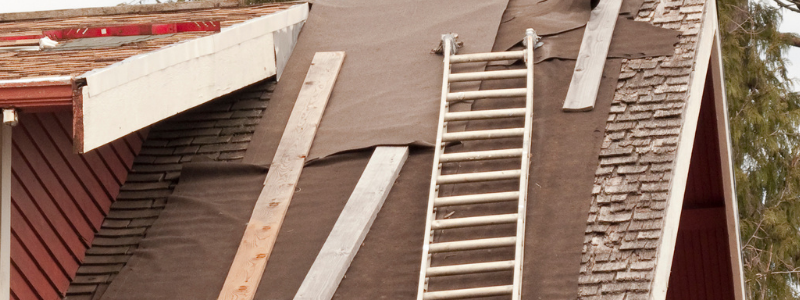
When is the Best Time for Reroofing?
Clear skies and some sun are ideal conditions for reroofing. That’s why spring is a very good time to get that roof repaired.
Spring is also a time when many building owners notice roof problems. Winter brings harsh conditions including cold, ice, and snow. When the snow and ice begin to melt, it is not surprising to find leaks. When temperatures begin to rise adhesive on asphalt shingles will be more effective. The conditions are ideal. With heat increases in the summer, reroofing conditions are more challenging. Autumn can bring wind and rain conditions that make roofing projects challenging.
Beware of Imposter Roofing Companies
Spring is a time when many building owners want roof repairs. Unfortunately, unscrupulous roofers take advantage of the demand. There are scammers out there ready to take your money. Guard against poor roofing repairs by taking these steps:
- Ask people you trust about their recommendations for a reputable roofing contractor.
- Ask questions about whether the company has insurance for injury and property damage. Is the company bonded, and licensed?
- Demand an estimate. If the deal sounds too good to be true, it probably is.
- Ask to see examples of work they have completed. Ask to talk to previous customers.
- Check out the company with Better Business Bureau in your area.
- What does social media reveal about this company?
- If they ask for money upfront, alarm bells should go off in your head.
- Don’t sign a contract until you have details and guarantees in writing.
- Look for a local company that has been in the business for several years.
- Don’t sign off on a job until you have inspected the work.
- Don’t pay until all aspects of the job have been fulfilled to your satisfaction.
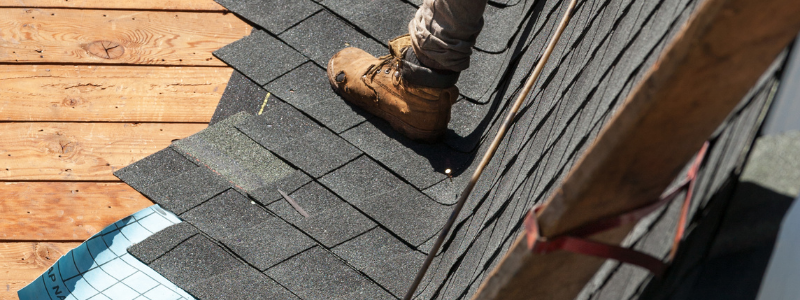
Signs of a Bad Roofing Job
Stand on the ground and look up at the reroofing project. Do all sections of the roof look uniform?
Does your visual inspection note parts of the roof that are aging differently?
Can you see cracked or missing shingles? Is the roof is missing shingles or does it have damaged shingles?
Are there stains that indicate leakage?
Check out the shingles. Are they mismatched? This indicates the roofer ran out of shingles and substituted a different color, or failed to replace some. Reputable roofers order the right amount of materials and do not skimp.
Examine roof decking, underlay, drip edges, and flashing. Are these in need of repair or replacement? Is the flashing new? Has it been properly installed and caulked? Inexperienced or shoddy roofing contractors often reuse flashing materials from other jobs to save money. Are there signs of rusty flashings or vent pipes?
Is the roofline sagging? The roofline should be straight. If there are dips or curves, the roof decking should have been replaced.
Send a knowledgeable person up on the roof. Different roofs require different nails. Were the correct nails used? Are they properly spaced so the shingles won’t be dislodged or leak? An expert will be able to point out other signs of a bad roofing job and what to do about it.
How Can You Tell if You’re Getting a Good Deal?
- Did the roofing company estimate competitively?
- Was the contract detailed and specific? Did the company fulfill all aspects of the contract?
- Was the job finished on time and within the estimated cost?
- Did the company leave the area the way they found it? Were shrubs and flower beds left intact? Reputable roofing contractors clear all construction debris, packages, and old shingles. Did you have to dispose of these materials yourself?
- Upon visual inspection, does the roof look uniform? Are the shingles all the same color? Is the roofline straight with no sags?
- Did the roofer begin with a starter shingle and continue upward creating both a uniform appearance and allowing shingles to work effectively?
- Did the job include metal drip edge flashing? Drip edge flashing carries water away from your building. They ensure the gutters do their job. This prevents water damage and guards against pests, rodents, and insects entering the attic. Look at the eaves and gable. A metal flashing fits between the shingle and the underlayment. Did the roofing company custom fit drip edge flashings to create a more secure border on your roof?
- Were roof vents replaced with new ones?
- When the roof was being installed, did the job include underlayment? Quality roofers place an underlayment between the sheathing and the shingles. This acts as an additional barrier to protect from moisture or water leaks.
- Did the roofing specialists install rodent covers to prevent rodent damage and debris from getting into plumbing pipes?
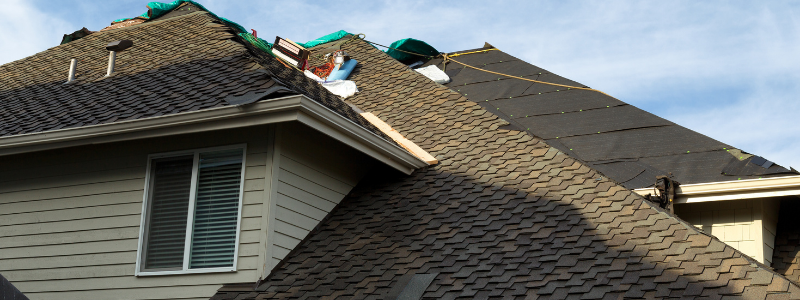
Why You Should Choose B&M Roofing to Replace Your Roof
B&M Roofing has been providing satisfied Colorado customers with quality roofing since 1947. We are a local company with strong ties to their Denver-area community.
When Colorado’s challenging weather conditions have damaged your roof, it is important to select a Colorado roofing company that understands Colorado roofing issues. Our licensed, bonded, and insured roofing experts will restore your roof, the gutters, downspouts, windows, doors, and siding to their original condition.
When you are looking for an experienced, competent roofing specialist, your best guarantee of good service is customer satisfaction. Ask trusted friends, relatives, co-workers, and neighbors about our roofing projects. Check out the testimonials on B&M Roofing’s website. Happy clients will tell you that we provide competitive estimates and prompt, professional work.
Our roofing specialists offer prompt, professional work. We leave your property neat and free of debris and finish on time. We use only quality materials that will produce a structurally sound, aesthetically pleasing roof.
B&M Roofing can provide informed, experienced suggestions to help clients make informed decisions about reroofing. We’ll be honest about looking for signs of a bad roofing job. Trust us –
To discuss your roofing needs or to book a free roof inspection and reroofing estimate, call 303-443-5843 or get a free estimate here.
Things to Consider When Replacing a Roof
Replacing a roof on any home is a large job, which is why we dedicate entire teams to it. We understand that you want life around your home to be back to normal as quickly as possible. While it should only take a few days to complete your project, depending upon its size and the weather, you’ll want to prepare your home for the job. On top of prep work, there are just some things to consider when replacing your roof. From the style and materials to budget and tear-off, here are some things to consider when replacing a roof:
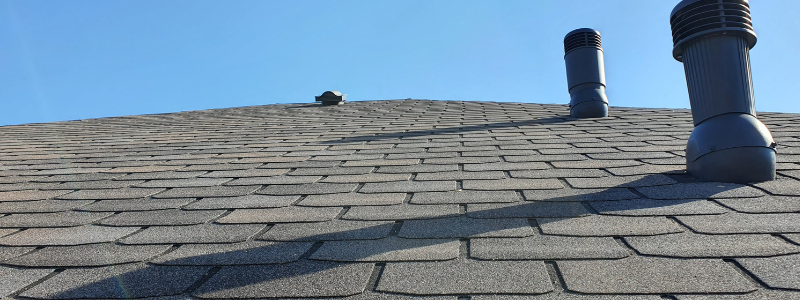
Consider These Things When Replacing a Roof
A lot of things are probably going through your head when you’re needing to replace your roof. Let B&M take care of the hassle and headache.
Preparation
Roof replacement is easier than you think and the better you’re prepared, the smoother the process will go.
Secure Loose Items
Our teams will be on your roof, hammering, moving piles of materials, and generally working quickly. This is likely to cause vibrations in your home. The extent of these disturbances varies by how your home is constructed, and they are often barely noticeable. However, preserve breakables such as hung pictures, mirrors, and fragile items on shelves by removing them to a place where vibrations won’t knock them over.
Clear Your Driveway
Typically, our teams park their vehicle in your driveway during the project. That gives us the fastest and most effective place to load shingles and if you need old roofing removed, to collect discarded materials. Having a driveway free of cars and other clutter helps us get your project done quickly.
Prepare Your Yard
Our teams take great care to prevent any damage to landscaping or other property during our roofing projects. Items such as nails and old roofing inevitably fall during construction. Remove any items such as barbecues, boats, patio furniture, and statuary that may be damaged by falling material.
Mind Children and Pets
Your home will be an active construction site as our teams work to put your new roof on. It’s no place for children or pets to be around. Protect your loved ones by keeping them inside during the project.
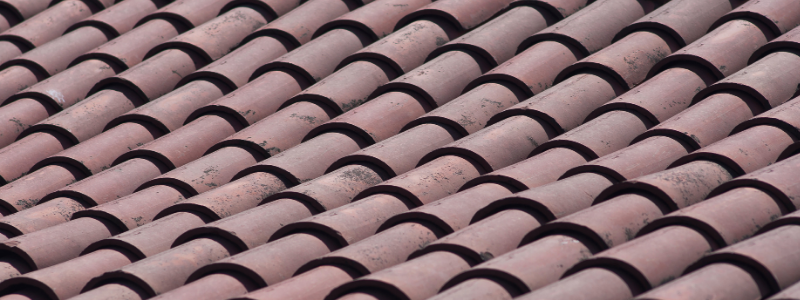
Style of Roof
If you haven’t already decided on what type of look you’re wanting, think about the style of roof that fits your budget, as well as the style and functionality of your home. Are you looking to fit in with the other houses in your neighborhood or do you want to stand out? What about the type of roof material? Our expert roofers at B&M Roofing can help walk you through different types of roofs that are common in Colorado and help you choose a style.
Roofing Materials
We briefly touched on this, but there are a few different options as far as roofing materials. While asphalt shingles are the most popular with residential properties in Colorado, there are a few other materials to choose from. Synthetic options last the longest in this harsh weather, but there are a lot of options to choose from. We work with only the finest manufacturers, like GAF, Owens Corning, CertainTeed, and much more. We’ll give you our best recommendations for which material is cost-efficient, energy-efficient, and practical.
Budget
When determining a budget, consider how long you’ll live in your house, how long you want your roof to last, the weather (hail, snow, etc), and which materials are most cost-efficient. When you think long-term, you’ll save more money in the long run. Metal roofs and synthetic materials tend to last the longest while clay roofs may look nice, but don’t last long (especially in Colorado’s harsh weather).
Types of Warranties
Each type of roofing material (slate, asphalt shingles, wood shake, metal, etc.) comes with a warranty. Most standard roofs come with a 20-year warranty while some others (composite and synthetic material) come with a 40 or 50-year warranty. No matter which type of roof you’re leaning towards, we’ll always make sure to include the warranty for each option, to help you decide which roof is best for your home.
HOA
If you’re part of a homeowner’s association, there may be certain limitations, restrictions, or guidelines for your neighborhood. Make sure to include your HOA in all roofing decisions you’re about to make and keep them in-the-loop with what you’re considering. Chances are you’re going to need the approval of your HOA when replacing your roof. This may not be your exact neighborhood, but we’ve included an example of some HOA roofing guidelines to follow here.
Roof Overlay vs Tear-Off
Depending on your budget, you may also be considering whether you’d like us to lay a new roof over your existing one or tear everything off and re-roof it all together. Depending on the state of your existing roof, we’ll make our best recommendations, but usually, roofing codes only allow no more than two layers of shingles on your roof.
Don’t Forget the Gutters
It may not be something that’s top-of-mind when you think about replacing your roof, but the gutters require constant upkeep and maintenance. We’d recommend using some type of gutter guard, or gutter cover, from a reliable source. We’ll be sure to make our own recommendations from roofing manufacturers with whom we work, but you have a variety of options.
If you’re ready to get started on your roofing project, contact the experts at B&M Roofing!
